UPSC Daily Current Affairs- 19th August 2023 | Current Affairs & Hindu Analysis: Daily, Weekly & Monthly PDF Download
GS-I
Likaru-Mig La-Fukche road
Subject: Geography
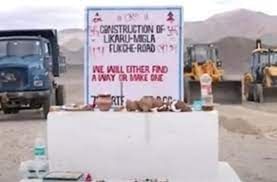
Why in News?
Border Roads Organisation (BRO) recently started the construction of the Likaru-Mig La-Fukche road close to Hanle in Eastern Ladakh’s Demchok sector.
About Likaru-Mig La-Fukche road:
- It is located close to Hanle in Eastern Ladakh.
- The 64-km long road will connect Likaru to Fukche, situated 3 km from the Line of Actual Control (LAC).
- Once completed, it will be the world’s highest motorable road at a height of 19,400 ft in Mig La.
- This would also provide an alternate land connectivity route to the Fukche advanced landing pad, which is only 2.5 km away from the LAC.
- It is the first project in India to be carried out entirely by an All Woman Road Construction Company. It is led by a five-member All Woman Border Road Task Force.
Umling La Pass:
- Currently, Umling La in Ladakh, at a height of 19,024 ft, holds the record of being the highest motorable road in the world.
- The construction of this road has been achieved by the BRO (Border Road Organization) as part of “Project Himank”.
- It is a 52-km road that connects Chishumle to Demchok villages. Both these villages lie in close proximity to the Line of Actual Control (LAC), and a friction point between India and China.
Source: The Print
Pong dam
Subject: Geography

Why in News?
Recently, the Pong Dam recorded the highest-ever water inflow since it became operational.
Background:-
- Due to heavy rainfall over the last two days, the Pong dam on the Beas River in Himachal Pradesh has recorded the highest-ever inflow.
About Pong Dam:-
- Formation: 1974.
- Location: Kangra District, Himachal Pradesh.
- Objective: water storage for irrigation and hydroelectric power generation.
- It was built across the Beas River.
- It is also called the Maharana Pratap Sagar.
- 1983: entire reservoir was declared a Wildlife Sanctuary by the Himachal Pradesh government.
- 1994: Government of India declared it a “Wetland of National Importance”.
- 2002: it was declared a Ramsar Site.
- Vegetation: tropical and subtropical forests.
- Flora: Eucalyptus, acacia, jamun, shisham, mango, mulberry, ficus, etc.
- Fauna: Barking deer, sambar, wild boars, nilgai, leopards, etc.
- Avian-Fauna: Black-headed gulls, Red-necked grebes, plovers, terns, ducks, etc.
Source: Indian Express
GS-II
Legalisation of Cannabis
Subject: Polity and Governance
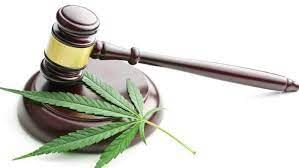
Why in News?
Recently the German government approved a draft law legalising the purchase and possession of cannabis for recreational use, allowing adults to possess up to 25 grams of cannabis and grow up to three plants for personal use.
About Cannabis:
- Cannabis refers to a group of three plants with psychoactive properties, known as Cannabis sativa, Cannabis indica, and Cannabis ruderalis.
- Cannabis is made up of more than 120 components, which are known as cannabinoids. Two of them are:
- Cannabidiol (CBD): This is a psychoactive cannabinoid, yet it is non-intoxicating and non-euphoric.
- It is often used to help reduce inflammation and pain. It may also ease nausea, migraine, seizures and anxiety.
- Tetrahydrocannabinol (THC): This is the main psychoactive compound in cannabis. THC is responsible for the “high” that most people associate with cannabis.
- Cannabis cultivation traces all the way up to 12,000 years ago, suggesting it was one of humanity’s oldest cultivated crops.
- Traditional Drink: Some scholars speculate that it may be the main ingredient of the ritual Vedic drink ‘soma’, mentioned in both the Rigveda and the Bhagavad Gita.
- 1961 Single Convention on Narcotic Drugs: It put down stringent controls for the manufacture and consumption of drugs including cannabis.
Laws pertaining to Cannabis in India:
- The Centre’s law around cannabis in India can be found in the Narcotics Drugs and Psychotropic Substances Act, 1985(though there are various states that have their own laws around cannabis as well).
- The law prohibits and criminalises the sale, possession, transportation and cultivation of cannabis in certain forms in India.
- The NDPS Act, when it comes to cannabis, includes:
- Charas, which is “the separated resin, in whatever form, whether crude or purified, obtained from the cannabis plant and also includes concentrated preparation and resin known as hashish oil or liquid hashish”.
- Ganja, “the flowering or fruiting tops of the cannabis plant (excluding the seeds and leaves when not accompanied by the tops)”.
- In addition “any mixture, with or without any neutral material, of any of the above forms of cannabis or any drink prepared therefrom”.
- Notably, the Act specifically prohibits the sale and production of cannabis resin and flowers, while the use of seeds and leaves is allowed.
- Apart from the NDPS Act, states have the power to draft their own laws on cannabis.
- Section 10 of the NDPS Act allows states to permit and regulate “the cultivation of any cannabis plant, production, manufacture, possession, transport, import inter-State, export inter-State, sale, purchase consumption or use of cannabis (excluding charas)”.
- For example, Uttarakhand became the first state in India to allow commercial cultivation of hemp in 2018. Another state law is the Assam Ganja and Bhang Prohibition Act which outlaws the purchase, consumption and possession of ganja as well as bhang.
Arguments in favour of Legalising Cannabis:
- Plant was most likely brought to India by Aryan migrants between 1000 and 2000 BC.
- It is treated as a sacred plant in the Vedas, considered a source of joy.
- The Hindu god Shiva is revered as the Lord of Bhang.
- The central government stated that the present legal framework regulating the usage of cannabis did not violate Articles 14 (right to equality), 19(1) (g) [freedom of trade], 21 (right to life or other fundamental rights guaranteed under the Constitution.
- The legalization of marijuana can help create jobs, battle stress, improve human concentration, resolve medical problems and provide sustainable agricultural incomes, among other things.
- Given India’s production capacity of cannabis, the government stands to benefit in terms of tax.
Arguments against legalisation:
- Dependency disorders: The International Classification of Diseases, Diagnostic, and Statistical Manual of Mental Disorders has classified cannabis as an addictive substance, capable of causing dependency disorders.
- While the supporters of marijuana claim that ‘only’ nine per cent of marijuana users become clinically dependent on the substance, the opposers use the same figure to substantiate the existence of clinical dependency on the drug.
- Withdrawal symptoms: There is considerable emphasis on withdrawal symptoms of marijuana, which include irritability, sleeping issues and dysphoria.
- For the users who try to quit the consumption, only 71 per cent of those succeed in quitting.
- Insufficient studies to claim benefits: The NDPS Act was a result of an elongated international pressure driven by the UN’s Single Convention on Narcotic Drugs, 1961.
- There exists no statistical proof to verify the significance of cannabis over regularly available drugs.
- It is admitted that cannabis is effective in reducing pain, but it is less safe than the approved opiates.
- Psychotic disorders: Marijuana users are at a greater risk of being diagnosed with chronic psychotic disorders including schizophrenia.
- Marijuana addicts often show impaired neural connectivity.
- The opposers argue that smoking marijuana increases the risk of bronchitis and pneumonia.
Judicial pronouncements judgements related to it:
- In Arjun Singh vs the State of Haryana, the Chandigarh High Court observed that bhang is not cannabis (hemp) under the provisions given under NDPS Act although it is a cannabis plant.
- Thus, it is not necessarily unlawful to eat cannabis.
- In 2019, the Delhi High Court agreed to listen to the petition made by the Great Legalisation Movement India Trust that challenged the ban on cannabis stating that the NDPS Act’s restrictions are arbitrary, unscientific, and unreasonable.
Way Forward:
Thus, legalizing marijuana can help reduce addictive behavior by erasing the stigma around it. However, there is no scientific study yet to conclusively prove that legalizing cannabis leads to a healthier relationship with drugs and substance abuse.
Source: The Hindu
Govt, WHO chief stress importance of traditional medicine, cite growing demand
Subject: International Relations
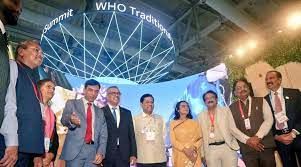
Why in News?
A year after the WHO Global Centre for Traditional Medicine was set up in India, the country is hosting the first global summit with an aim to help identify areas of collaboration in traditional medicine.
- This summit was hosted alongside the ongoing G20 ministerial meeting of the health track in Gandhinagar, Gujarat.
- The Global Summit was co-hosted by the WHO and the Government of India.
Traditional Medicines
- Traditional medicine, as defined by the WHO, is the sum total of the knowledge, skills, and practices based on the theories, beliefs, and experiences indigenous to different cultures.
- These skills are used in the maintenance of health as well as in the prevention, diagnosis, improvement, or treatment of physical and mental illness.
- Some traditional medicine systems are supported by huge volumes of literature and records of the theoretical concepts and practical skills.
- Others pass down these skills from generation to generation through verbal teaching.
- The most widely used traditional medicine systems today include those of China, India, and Africa.
India & Traditional medicine
- India has been known to be rich repository of medicinal plants.
- The forest in India is the principal repository of large number of medicinal and aromatic plants.
- About 8,000 herbal remedies have been codified in AYUSH systems in INDIA.
- Ayurveda, Unani, Siddha and Folk (tribal) medicines are the major systems of indigenous medicines.
Opportunities in AYUSH sector
- The country has witnessed unprecedented growth in the production of AYUSH medicines, supplements and cosmetics.
- This sector has seen exponential growth from more than $3 billion in 2014 to $18 billion in 2020 and is anticipated to reach $24 billion in 2023.
- Presently, 7,000 AYUSH-based health and wellness centres are operational in India.
- There are immense possibilities of investment and innovation in supply chain management, AYUSH-based diagnostic tools and tele-medicine.
Steps taken by India to Promote AYUSH
- National AYUSH Mission
- Department of AYUSH, Ministry of Health and Family Welfare had launched National AYUSH Mission (NAM) during 12th Plan.
- The basic objective of NAM is to promote
- AYUSH medical systems through cost effective AYUSH services, strengthening of educational systems,
- facilitate the enforcement of quality control of Ayurveda, Siddha and Unani & Homoeopathy (ASU &H) drugs
- sustainable availability of ASU & H raw-materials.
- New Ministry Formed
- In 2014 Department of AYUSH, was made into a separate Ministry of AYUSH, a dedicated to traditional medicine and treatment.
- Recent Steps
- The new category 'AYUSH Aahar’ introduced by the FSSAI in its regulations will help the producers of herbal nutritional supplements.
- The AYUSH Export Promotion Council has been set up to encourage exports and help find foreign markets.
- The government is going to create a network of AYUSH Parks to encourage research and provide a new direction to AYUSH manufacturing.
- An incubation centre developed by the All-India Institute of Ayurveda was inaugurated by the Ministry of AYUSH.
- This will encourage start-up culture in the field of traditional medicine.
WHO Global Centre for Traditional Medicine (GCTM)
- GCTM is a knowledge centre for traditional medicine which is the first and only global outpost centre for traditional medicine across the world.
- The Centre is located at Jamnagar, Gujarat, India.
- As lead investor in the WHO GCTM, India has committed an estimated US$ 250 million to support the Centre’s establishment, infrastructure and operations.
Goals of GCTM
- GCTM lays down five goals. These are:
- It aims to create a database of traditional knowledge system using technology.
- It will create international standards for testing and certification of traditional medicines so that confidence in these medicines improves.
- GCTM should evolve as a platform where global experts of traditional medicines come together and share experiences.
- GCTM should mobilize funding for research in the field of traditional medicines.
- GCTM should develop protocols for holistic treatment of specific diseases so that patients could benefit from both traditional and modern medicine.
News Summary:
- Recently, India hosted the first global summit on traditional medicine, alongside the ongoing G20 ministerial meeting of the health track.
- The main outcome of this global summit came in the form of Gandhinagar Declaration.
Key highlights of the summit
- Dedicated platform for traditional medicine
- The summit decided to create a dedicated platform for traditional medicine under the G20 framework.
- This platform will aim to foster international collaboration, share best practices, and seamlessly integrate traditional medicine into the heart of mainstream healthcare system.
- Increased role of WHO centre
- The WHO centre will study not only traditional medicine from India but also collaborate with research institutes abroad to study and generate evidence about their traditional medical practices.
Key highlights of the speech delivered by WHO director general Dr Tedros Adhanom Ghebreyesus
- Highlighted importance of traditional medicines
- Traditional medicine is not a thing of the past. There is a growing demand for traditional medicine across countries, communities and cultures.
- Traditional, complementary and integrative medicine is especially important for preventing and treating non-communicable diseases, for mental health, and for healthy aging.
- Role of traditional medicine in finding modern drugs
- He cited examples of how knowledge of traditional forms of medicines helped discover modern drugs.
- E.g., aspirin from bark of willow tree, childhood cancer drugs from Madagascar periwinkle, cardiovascular and hypertension drugs from hawthorne and foxglove, and artemesinin from sweet wormwood.
- Three recommendations for countries
- All countries should:
- commit to examining how best to integrate traditional and complementary medicine into their national health systems;
- identify evidence-based and actionable recommendations that can inform the next WHO traditional medicine global strategy;
- unlock the power of traditional medicine through science.
- All countries should:
Source: Indian Express
Expansion of the Digital India Programme
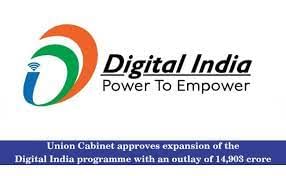
Why in News?
The Union Cabinet Approved the five year extension and expansion of the Digital India programme with an outlay of ₹14,903 crore.
About Digital India program:
- The Digital India program was launched on July 1, 2015, by the Government of India.
- The program aims to transform India into a digitally empowered society and knowledge economy.
- It seeks to harness the potential of information technology and digital platforms to provide government services to citizens, promote digital literacy, and foster innovation and entrepreneurship.
Features of the programme:
- Broadband Connectivity: Expanding high-speed internet connectivity to rural and remote areas is essential to bridge the digital divide.
- This initiative aims to provide equal access to information and opportunities for citizens across the country, regardless of their geographical location.
- Digital Infrastructure: Developing robust digital infrastructure, including data centres, cloud platforms, and networks, is the foundation of a digitally-driven nation.
- This infrastructure supports various digital services, applications, and platforms, enabling efficient data storage, processing, and sharing.
- e-Governance: Transitioning government services and benefits to electronic platforms improves efficiency, transparency, and accessibility.
- Citizens can access services online, reducing paperwork, eliminating intermediaries, and enhancing the overall service delivery experience.
- Digital Literacy: Promoting digital literacy is crucial, especially in rural areas where many citizens might not be familiar with digital tools.
- Digital literacy campaigns and training programs help individuals gain the skills needed to navigate the digital landscape effectively.
- Public Internet Access: Establishing Common Service Centers (CSCs) in rural areas provides public Internet access and government services under one roof.
- These centers act as touchpoints for citizens to avail of various digital services without having to travel to urban centers.
- Digital Payment Systems: Promoting digital payment systems is a significant step towards reducing cash transactions, promoting transparency, and formalizing the economy.
- Platforms like BHIM and UPI have revolutionized the way transactions are conducted.
- Digital Identity: Aadhaar, a biometric identification system, provides citizens with a unique digital identity.
- This identity simplifies access to government services, eliminates duplications, and enhances the efficiency of service delivery.
- Startup and Innovation: Fostering a conducive environment for startups and innovation in the technology sector drives economic growth and creates job opportunities.
- Initiatives like “Startup India” encourage entrepreneurship and technological advancement.
Significance of Digital India
- Empowering citizen: Digital India is empowering the common citizen. It has enabled people’s access to the government system, made services and processes transparent, non-discriminatory, and attacked corruption.
- Supports Various Schemes: It has benefitted various schemes, launched after Digital India, including Diksha, eNAM, eSanjeevani solution for telemedicine, DigiBunai and PM SVANidhi scheme.
- Services to citizens made easy: Getting Driving licence, birth certificate, paying electricity bill, paying water bill, filing income tax return, have become very easy, very fast with the help of Digital India.
- All this is happening in villages, in Common Service Centres (CSCs) near people’s homes.
- Internet in Remote areas: 2.5 lakh CSCs had helped take the Internet to remote areas. Under Bharat Net scheme, work is underway on a mission mode to bring broadband internet to the villages.
- Digilocker: It has helped millions of people especially during the pandemic by providing a digital storage facility for school certificates, medical documents and other important certificates.
- PM Kisan Samman Nidhi: Rs 1.35 lakh crore have been deposited directly into the bank account of more than 10 crore farmer families, and that Digital India has realized the spirit of One Nation, One MSP.
- One Nation One-Ration Card: The Supreme Court asked all the states to implement the initiative.
- This initiative is benefitting people who travel to other states for work.
- PM WANI: Access points are being created so that rural youth can connect with high-speed internet for better services and education.
- In addition, 5G technology will bring significant changes in the world, and India is preparing itself to make the most of this opportunity.
Major Challenges faced by Digital India Mission:
- The internet speed is slow as compared to the speed in other developed nations.
- The MSMEs struggle adapting to the technology.
- High initial set up cost and maintenance issues
- Growing Cyber threats and crimes.
- Limited capability of poor quality, entry-level smartphones for smooth internet access.
- Lack of skilled manpower in the field of digital technology.
- Lack of oversight over authority dealing with digital governance initiatives.
- Language Barriers in the rural areas
Suggestive measures:
- Infrastructure Investment: Continued investment in digital infrastructure is crucial to ensure that connectivity reaches all corners of the country.
- This includes expanding broadband networks, improving mobile coverage, and establishing data centers that can support the increasing demand for digital services.
- Digital Skill Training: Focusing on digital literacy and training across all age groups is essential.
- Educational programs and workshops should be designed to equip citizens with the skills needed to effectively use digital tools and platforms.
- This empowers individuals to participate more fully in the digital economy.
- Cybersecurity Measures: Enhancing cybersecurity measures and data protection is paramount as digital interactions increase.
- This involves developing strong encryption standards, promoting safe online practices, and implementing regulations that safeguard user data and privacy.
- Local Language Content: Creating digital content in various languages is critical to ensuring that digital services are accessible to all citizens, regardless of their linguistic background.
- This includes translating government websites, applications, and other content into regional languages.
Way Forward:
Digital India has played a crucial role in citizen services. The movement will be taken forward by leveraging futuristic technologies like Artificial Intelligence, Machine Learning and blockchain. In India, on one side there’s a zeal for innovation and on the other, there’s a passion to adopt those innovations quickly. Thus, the data and demographic dividend collectively offers huge potential.
Source: The Hindu
GS-III
India’s first 3D-printed post office inaugurated
Subject: Science and Technology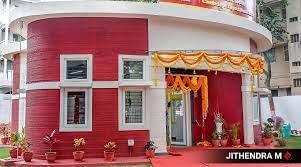
Why in News?
India’s first 3D-printed post office was virtually inaugurated by Union Minister Ashwini Vaishnaw in Bengaluru’s Cambridge Layout.
- Its construction was completed in just 43 days — two days ahead of the deadline.
- Multinational company Larsen & Toubro Limited built the post office with technological support from IIT Madras.
What is 3D printing?
- Background
- Invented in the 1980s, 3D printing burst into the mainstream around the 2010s, when many thought it would take over the world.
- The technology, however, at the time was expensive, slow and prone to making errors.
- In recent years, some of these flaws have been done away with, making 3D printing more prevalent than ever before.
- About
- 3D printing, also known as additive manufacturing, is a process of creating three-dimensional objects from digital models by adding material layer by layer.
- It is an additive process, in which layers of a material like plastic, composites or bio-materials are built up to construct objects that range in shape, size, rigidity and colour.
- This process allows for more efficient and customized production compared to traditional subtractive manufacturing methods.
How is 3D printing done?
- Requirement
- To carry out 3D printing, one needs a personal computer connected to a 3D printer.
- All they need to do is design a 3D model of the required object on computer-aid design (CAD) software and press ‘print’.
- The 3D printer does the rest of the job.
- Design
- The process begins with creating a digital 3D model of the object one wants to print.
- This model can be created using 3D modelling software or obtained through 3D scanning techniques.
- Slicing
- The 3D model is sliced into thin horizontal layers using specialized software. Each layer represents a cross-section of the final object.
- Preparation
- The sliced model is sent to the 3D printer, along with instructions regarding the printing parameters such as layer thickness, print speed, material type, and temperature.
- Printing - The 3D printer reads the instructions and starts the printing process. It uses various methods and technologies, including:
- Fused Deposition Modeling (FDM)
- This is one of the most common 3D printing methods.
- It involves extruding molten thermoplastic material through a heated nozzle that moves along the X, Y, and Z axes.
- As the material is deposited layer by layer, it cools down and solidifies, forming the final object.
- Stereolithography (SLA)
- SLA uses a liquid photopolymer resin that is cured by a UV laser.
- The laser selectively solidifies the resin layer by layer, creating intricate and highly detailed objects.
- Selective Laser Sintering (SLS)
- In SLS, a laser fuses powdered material (such as plastics, metals, or ceramics) layer by layer.
- Powder Bed Fusion (PBF)
- Similar to SLS, PBF uses a laser to selectively melt and fuse powdered materials like metals, plastics, or ceramics.
- The difference lies in the process details and the materials used.
- Inkjet Printing
- Some 3D printers use inkjet-like technology to deposit material in droplets, which are then cured to form layers.
- Fused Deposition Modeling (FDM)
- Layer-by-Layer Construction
- The printer continues to deposit material layer by layer based on the sliced model until the complete object is formed.
- Supports might be included for overhanging or intricate parts, and these supports can be removed after printing.
- Post-Processing
- Once the printing is complete, there might be some post-processing steps, such as cleaning, curing, sanding, painting, or assembling, depending on the material and desired finish.
What are some of the notable examples of 3D printing?
- 3D printing is being used in a host of different industries like healthcare, automobile and aerospace.
- In May this year, aerospace manufacturing company Relativity Space launched a test rocket made entirely from 3D-printed parts, measuring 100 feet tall and 7.5 feet wide.
- Shortly after its take off, however, it suffered a failure.
- At the peak of the Covid-19 pandemic in 2020, the healthcare industry used 3D printers to make much-needed medical equipment, like swabs, face shields, and masks, as well as the parts to fix their ventilator
Source: Indian Express
RBI unveils UDGAM portal for Unclaimed Deposits Claims
Subject: Economics
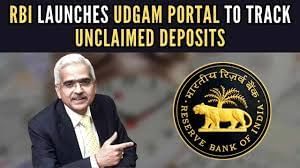
Why in News?
The RBI has launched Centralised Web Portal called UDGAM to search and retrieve unclaimed deposits from various banks, all in one centralized location.
About UDGAM Portal
- The UDGAM portal is a centralized web platform launched by the Reserve Bank of India (RBI) called “Unclaimed Deposits – Gateway to Access inforMation.”
- It is collaborated by Reserve Bank Information Technology Pvt Ltd (ReBIT), Indian Financial Technology & Allied Services (IFTAS), and participating banks.
- It aims to provide individuals with an accessible and user-friendly platform to search and retrieve their unclaimed deposits from various banks in one centralized location.
- The portal consolidates unclaimed deposit data from different banks.
- It empowers users to identify their dormant accounts and take actions such as claiming the deposited amount or reactivating their dormant accounts directly through their respective banks.
Key Features
The UDGAM Portal brings forth a set of user-centric features that redefine the approach to reclaiming unclaimed deposits:
- Reclaim or Activate: Through this platform, users have the autonomy to initiate either the process of reclaiming the deposited amount or reactivating their dormant accounts, all under the umbrella of their respective banks.
- Effortless Registration: Customers can swiftly register on the UDGAM Portal using their mobile numbers, initiating their journey towards unlocking their unclaimed funds.
- Search and Input: Once registered, users can seamlessly search for their unclaimed deposits by inputting essential details such as their name, PAN, voter ID, driving license, and passport number.
- KYC Process: Upon locating their deposits, customers can facilitate their retrieval by completing a streamlined Know Your Customer (KYC) process through their respective bank branches.
- Nominee Assistance: In instances where the deposit holder is no longer alive, the nominee can facilitate the retrieval process by providing the necessary documents.
Source: The Hindu
|
55 videos|5389 docs|1141 tests
|





















